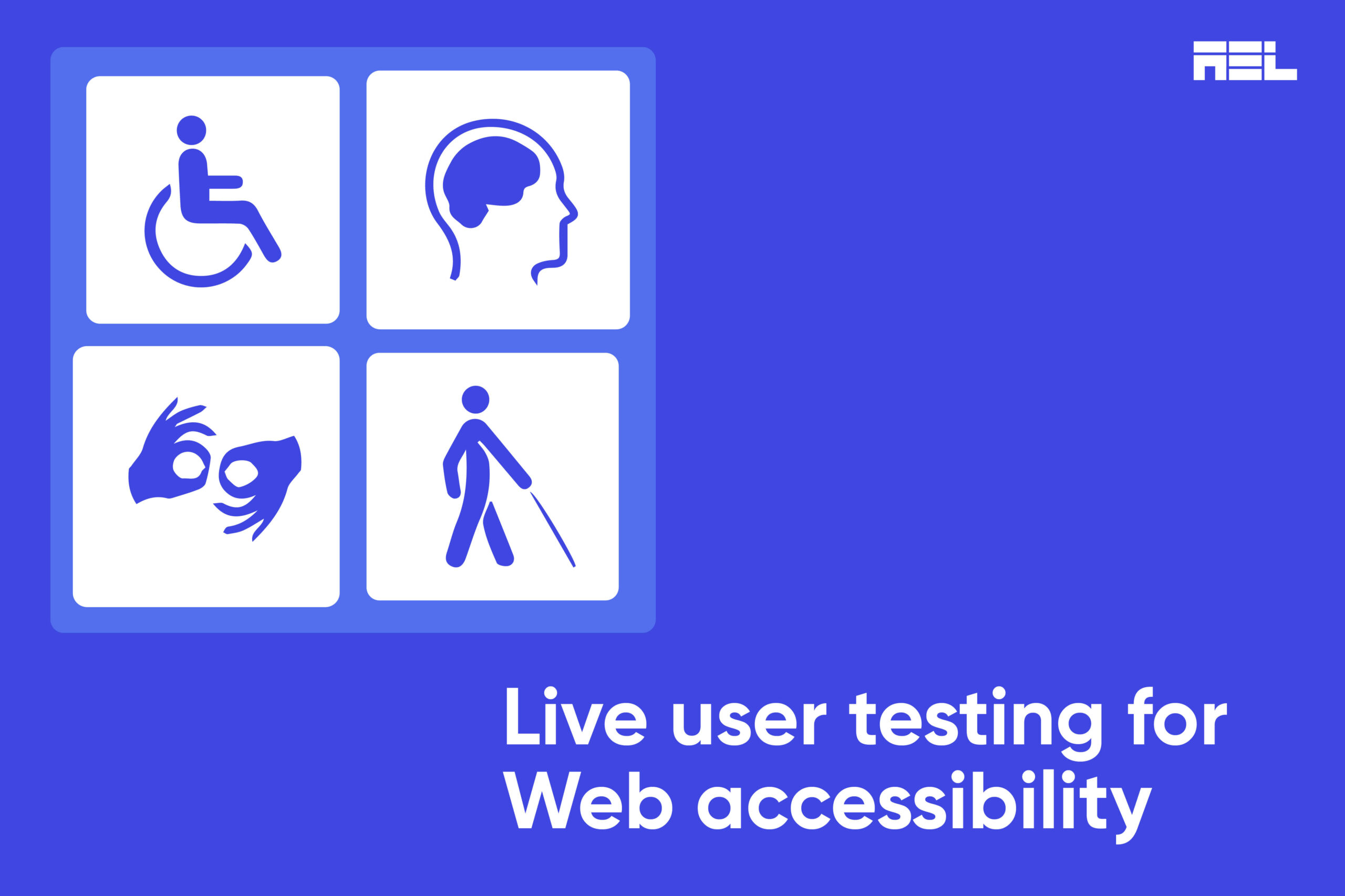Web accessibility involves creating websites and applications everyone uses, regardless of their abilities or disabilities. It ensures that people with disabilities can access, interpret, navigate, engage with, and contribute to the web without depending on others. It also benefits people without disabilities, such as older individuals, low-bandwidth users, people with temporary impairments, and different devices.
A holistic strategy for improving online accessibility involves content, layout, functionality, coding, testing, and assessment. Live-user testing involves actual users with impairments, while various evaluation methods, such as interviews, surveys, observations, think-aloud procedures, task analyses, and usability tests, are employed to evaluate the website’s accessibility. This blog will focus on key aspects related to live-user testing for accessibility.
Table of Contents
Benefits of Live-User Testing
Live-user testing has many benefits for web accessibility. Some of the benefits are:
- Live-user testing provides direct and authentic feedback from the target users with firsthand experience and knowledge of using the web with disabilities. It can reveal the actual needs, preferences, challenges, and expectations of users with disabilities that other evaluation methods may not capture.
- It can help identify and prioritize the most critical and relevant accessibility issues affecting the user experience and satisfaction. Furthermore, it helps validate and verify the effectiveness and efficiency of the implemented accessibility solutions and features.
- Educates and motivates web developers to understand how users with disabilities use the web. It also helps them understand Assistive technology (AT) and adaptive strategies accordingly.
- Enhances website and app quality. It also improves usability and reliability for all users, including those with disabilities.
Challenges Faced in Live user Accessibility testing
However, live-user testing also has challenges and learning curves for web accessibility. Some of the challenges are:
- Live-user testing requires careful planning and preparation to ensure that the objectives, scope, methods, tools, tasks, scenarios, participants, facilitators, data collection, data analysis, and data reporting are well-defined and aligned with the web accessibility standards and guidelines.
- Sufficient time and resources must be allocated for recruiting, training, and supporting the volunteers with disabilities participating in the testing process.
- Requires a professional with adequate skills and knowledge who can handle any issues, such as technical, ethical, and emotional (if any), that may arise during the testing process.
- Constant evaluation and improvement to ensure that the testing process is valid, reliable, objective, and representative of the diverse and dynamic needs and situations of users with disabilities.
Success and Impact of Live user testing
Despite these challenges, live-user testing has proven to be a powerful and valuable method of evaluating web accessibility. Many successful examples and case studies have shown the impact and benefits of live-user testing for web accessibility. Some of these examples include:
- The WAI offers resources for involving users in web accessibility evaluation, including videos, articles, checklists, tools, templates, and methodologies for web designers and developers.
- The WebFX company has conducted live-user testing with blind and visually impaired users as part of their Audit to CertificationTM process. The live-user testing helped them identify and fix the accessibility issues that were missed by automated tools or human evaluation. The live-user testing also helped them confirm that their websites met the Web Content Accessibility Guidelines (WCAG) standards.
- McDonald’s: The fast food giant tested its online ordering system with 20 real customers to reduce abandonment and poor conversion rates. Real-time user testing revealed problems and preferences, including progress bars, confirmation pages, and transparent delivery schedules.
Web accessibility testing with real users is an iterative process that should be constantly evaluated and refined. Accessibility on the web is not a finished product but rather a moving target that adapts to new technology and user expectations over time. That’s why it’s crucial to incorporate accessibility testing with real people into the online design and development process from the start.
Wrapping up
Live-user testing is crucial for improving online accessibility for people with special needs. It gathers honest input from the intended audience, prioritizes accessibility concerns, and inspires designers and developers. This technique, in addition to automated tools, ensures the quality and usability of websites and apps, brand reputation, market reach, and SEO ranking. Live-user testing can help create a more inclusive and diverse web that works for everyone.
Here At AEL Data, we have experts who examine each page of your website for problems and then work to fix them. We also provide post-project transition support programs to ensure that you have a smooth transition after going live. Click here to schedule your free call today!



